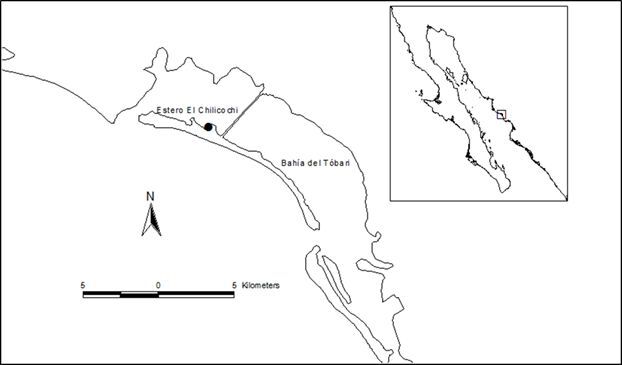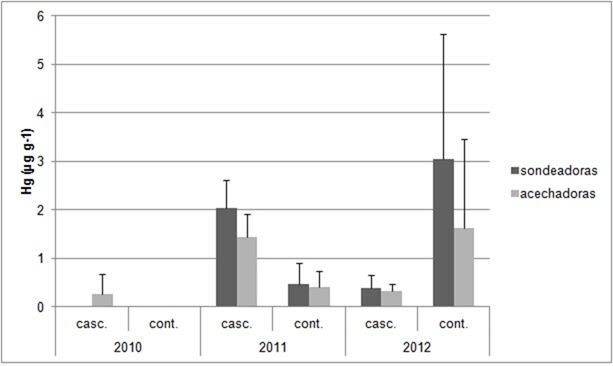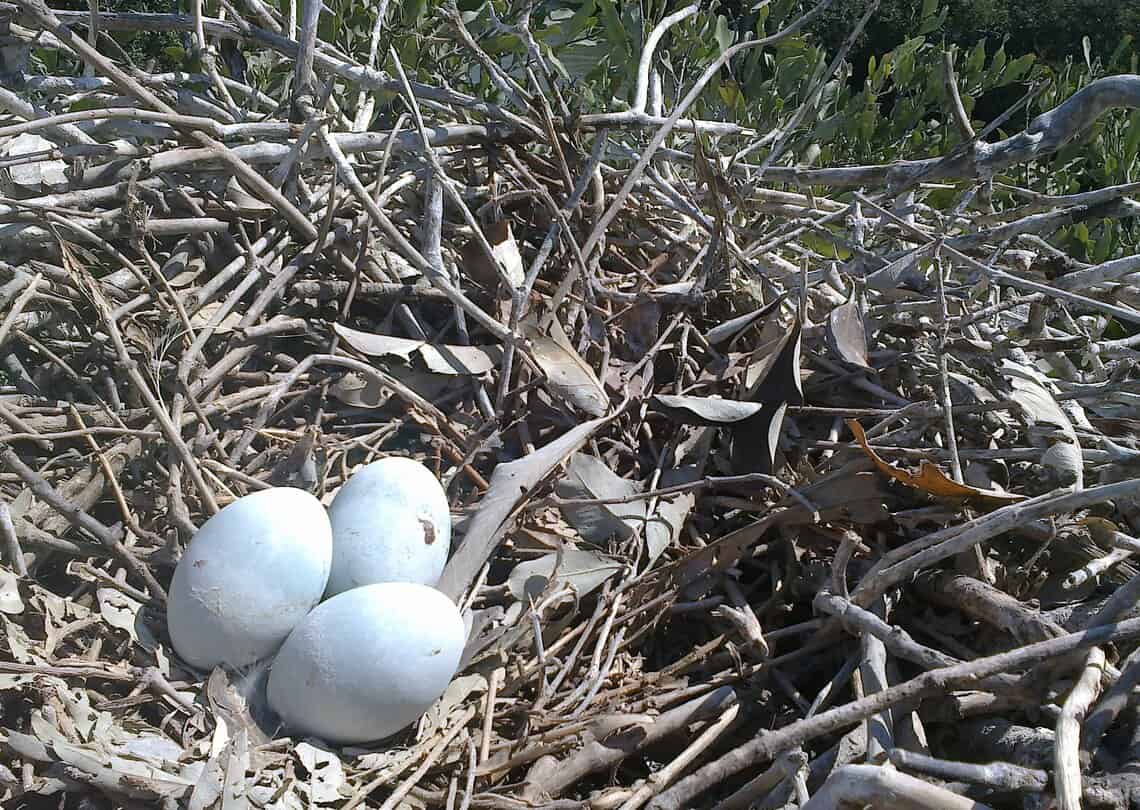By Daniela Aguilera-Márquez, German Leyva-García, and Jaqueline García-Hernández, Centro de Investigación en Alimentación y Desarrollo, A.C.
Egrets and similar wading birds inhabit a wide variety of coastal aquatic ecosystems where they feed on vertebrates and invertebrates. Due to the variety of food sources and their proximity to the coast, they are exposed to persistent environmental pollutants, such as organochlorine pesticides, polychlorinated biphenyls (PCBs) and heavy metals, which is why they are considered indicator species of environmental stress. The Chilicochi estuary nesting colony is a nesting site for at least 12 species. It is located on the inner part of Huivulai Island in the Tóbari Bay lagoon system in southern Sonora, Mexico. The bay is the receiving body for at least 10 agricultural and urban drains originating in the Yaqui Valley, as well as discharges from aquaculture farms in the area.
The concentrations of heavy metals in eggshell and egg contents of birds of the families Ardeidae and Threskiornithidae were determined in the bay of Tóbari, Sonora, Mexico over a period of three years (2010-2012) during which the bay was dredged and a stone barrier was partially removed.

Mercury levels found in egg content in the range of 1.5-18 µg g-1 (dry weight) are sufficient to cause decreased total egg weight, embryo malformations, low hatching rate, poor weight gain, and low chick survival. In 2010, none of the eggs from birds sampled in our study exceeded this limit, however, in 2011, 9% of eggs analyzed exceeded the limit and in 2012 15% exceeded it.
Heavy metal concentrations over the 3 years of sampling were compared in three species: Great Blue Heron (Ardea herodias), Roseate Spoonbill (Platalea ajaja) and Snowy Egret (Egretta thula). In the year prior to dredging (2010), high concentrations of copper were found in both egg content and shell. During the dredging months, this essential element decreased in both content and shell, recovering in 2012, although only in shell. The non-essential element, mercury, was present in higher concentrations in the shell before dredging, but after dredging, its concentration increased, and it was also found in the egg content. In the case of cadmium, a higher concentration was observed in the shell before dredging, increasing during dredging, which could indicate that the shell is an efficient barrier for this metal.

In addition, mercury concentrations were compared between probing (sondeadoras) and stalking birds (acechadoras). Mercury concentrations in content were higher in probers (2.0 µg g-1) compared to stalking birds (0. 58 µg g-1). This difference was observed after dredging; therefore, it is possible that the probing birds are acquiring higher concentrations of mercury due to the way they feed since they are consuming the pollutants in the sediment together with their prey. Pollutants in this case were increased by the dredging.
We hypothesize that the environmental impacts of dredging in a contaminated area, such as the Tóbari Bay, affected the bird populations in this area temporarily. However, more study is needed to determine the long-term impacts. The dredging did have some positive benefits to the ecosystem as it as it increased marine productivity, and the artificial islands or “tarquinas” that were created with the extracted sediments are now nesting sites for many shorebirds such as terns, gulls, plovers, and oystercatchers.
We thank the Flora and Fauna Protection Area Islas del Golfo de California for the support provided through PROCODES projects for the completion of this work. These results are published in the Mexican Pacific book, Contamination and environmental impact: diagnosis and trends, which can be accessed here.

